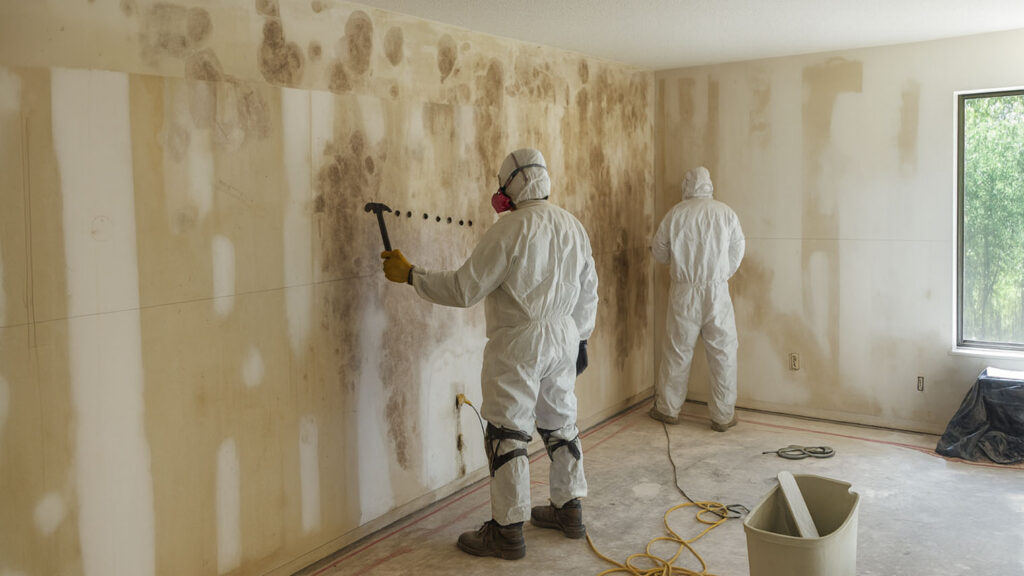Mold contamination in residential and commercial properties continues to be a significant concern in Kelowna and the surrounding region. The area’s damp climate and frequent seasonal moisture contribute to the prevalence of mold growth, which threatens both property integrity and occupant health. Addressing mold issues promptly through professional remediation is crucial for protecting public health and preserving property value.
Health Impacts of Mold Exposure
Exposure to mold, particularly within damp indoor environments, can lead to various adverse health effects. According to the Centers for Disease Control and Prevention (CDC), individuals exposed may develop symptoms such as nasal congestion, coughing, wheezing, eye and skin irritation, or sore throat. People with asthma, allergies, chronic lung conditions, or compromised immune systems may experience more severe reactions.

The National Institute of Environmental Health Sciences (NIEHS) reports that young children living in moldy homes are at increased risk for developing asthma, and continued exposure to certain molds like Aspergillus fumigatus has been linked to fungal asthma, a form characterized by airway obstruction and inflammation. Occupational exposure to mold in workplaces can also increase respiratory symptoms and lead to higher rates of absenteeism, underscoring the impact on workforce health.
While some nonspecific symptoms such as headaches and fatigue have been reported anecdotally, scientific consensus indicates more data is needed to conclusively link these to mold exposure. Vulnerable populations including children, the elderly, and immune-compromised individuals are particularly at risk and benefit from prompt mold management.
Common Causes of Mold Growth
Moisture remains the critical factor enabling mold proliferation. In Kelowna homes and businesses, common sources of moisture include water leaks from roofs and pipes, condensation buildup in heating and air conditioning systems, and groundwater seepage. Poor ventilation contributes to trapped humidity, creating ideal conditions for mold growth in basements, crawl spaces, bathrooms, kitchens, and around HVAC units.

Flooding events or persistent water intrusion significantly increase mold risk if affected materials are not dried within 24 to 48 hours. The local climate’s combination of seasonal rainfall and indoor moisture challenges necessitates vigilant property maintenance to minimize mold development.
Preventive Measures for Homeowners
Maintaining indoor relative humidity below 60% is a recommended strategy to reduce mold risk, achievable through the use of dehumidifiers and air conditioning systems. Promptly repairing leaks and sealing water entry points is essential to minimize ongoing moisture sources. Improving air circulation with exhaust fans and opening windows periodically helps mitigate trapped humidity. It is also critical to dry any water-damaged materials or surfaces within 24 to 48 hours to prevent mold establishment. Regular maintenance and cleaning of HVAC systems and dryer vents further support moisture control and mold prevention efforts.
Role of Certified Mold Remediation Companies
Professional mold remediation involves comprehensive inspection techniques, employing moisture meters and infrared cameras to accurately identify both visible and hidden mold and moisture sources.
Containment of affected areas uses Environmental Protection Agency (EPA)-approved materials and negative air pressure systems to limit mold spore spread during remediation. Cleaning protocols vary based on material type: non-porous surfaces are treated with fungicidal solutions, while porous materials heavily affected by mold such as drywall, insulation, and carpeting are removed and disposed of according to environmental safety regulations.
Post-remediation cleaning with High-Efficiency Particulate Air (HEPA) vacuums and air scrubbers reduces airborne spore levels. Certified mold remediation professionals typically hold credentials such as Mold Remediation Technician (MRT) or Mold Remediation Supervisor (MRS) and align their work with industry standards including ANSI/IICRC S520 to ensure quality outcomes and occupant safety.
Expert Insights
“Mold contamination poses significant health and structural risks that require careful inspection and remediation,” said Will Bohm, owner of Dustless Demolition in Kelowna, BC, and a certified mold removal specialist. “Effective remediation depends on thorough containment and removal measures that protect indoor environments.”
Supporting Data and Metrics
The mold remediation market in North America is valued at approximately USD 1.34 billion in 2025, with a compound annual growth rate (CAGR) nearing 4%, driven by rising awareness of mold-related health risks and increased water damage incidents. Canadian remediation costs typically range from CAD 2,000 to CAD 6,000 depending on severity, with prices in British Columbia trending higher due to regional climate challenges. Studies indicate that nearly 50% of homes and up to 85% of commercial buildings in damp climates show signs of moisture issues that could lead to mold growth, emphasizing the scale of the concern.
Conclusion
Mold contamination remains a pressing health and property concern in moisture-prone regions such as Kelowna. Early identification and professional remediation guided by recognized industry standards are instrumental in mitigating associated risks.
Homeowners and business operators are encouraged to seek certified mold inspections and remediation services to safeguard indoor environments and protect health.
For further information or to arrange a professional mold assessment, contact local certified mold remediation service providers.
Dustless Demolition is a certified mold remediation service provider serving Kelowna and surrounding regions. The team adheres to industry-recognized certifications and standards, including ANSI/IICRC S520, to deliver thorough mold assessment, containment, removal, and cleanup services. Committed to safety and regulatory compliance, the company supports healthier indoor environments for homes and businesses.


